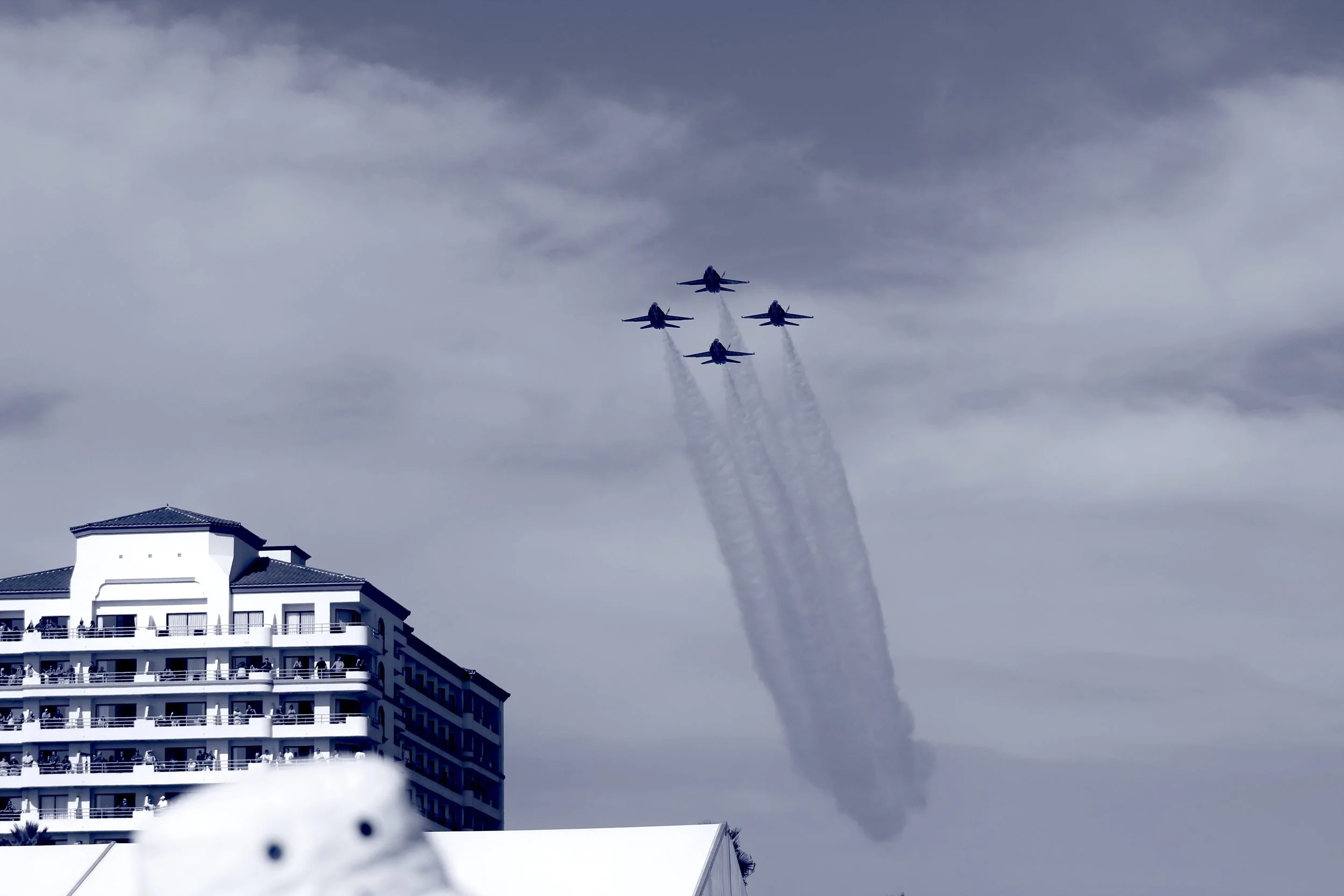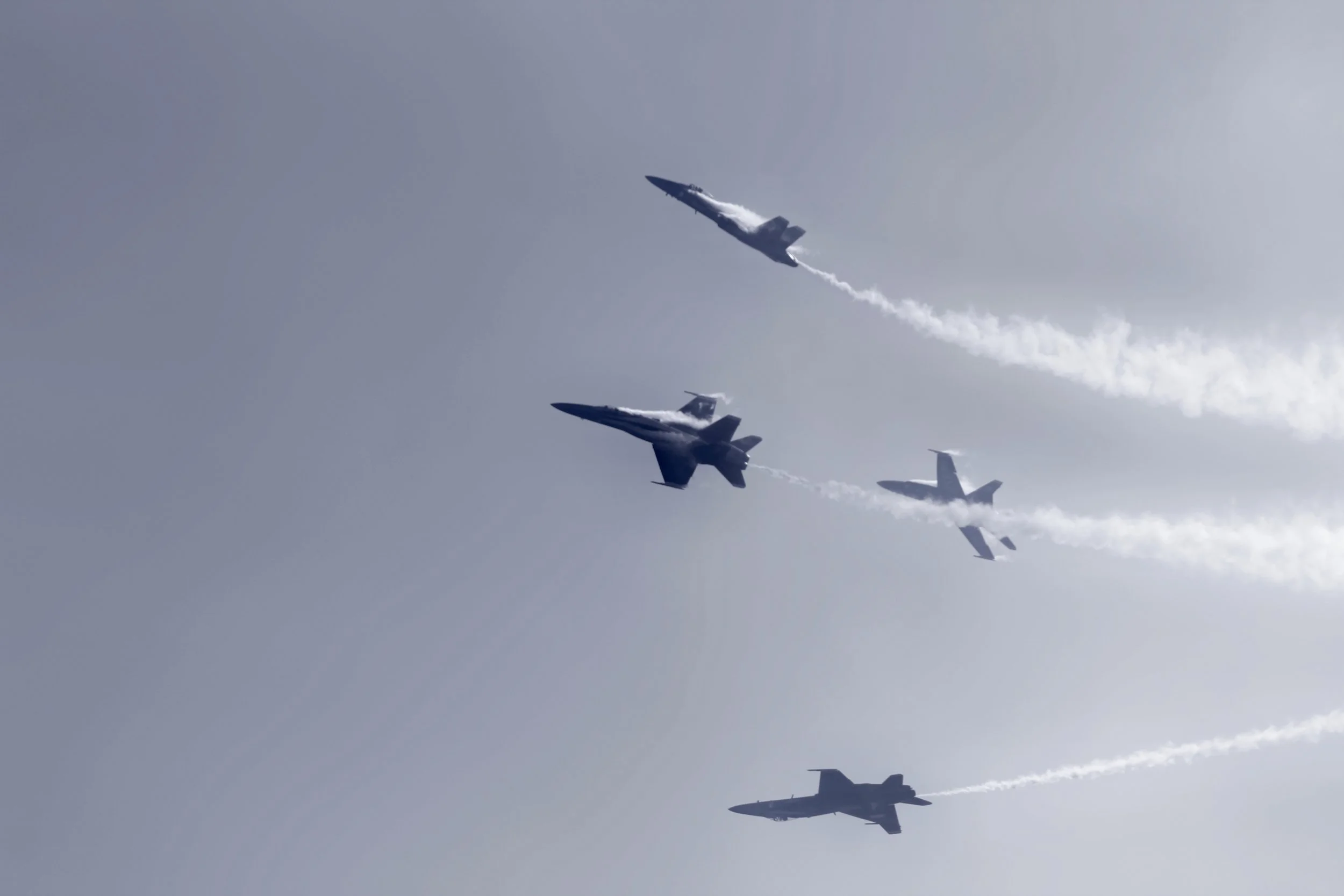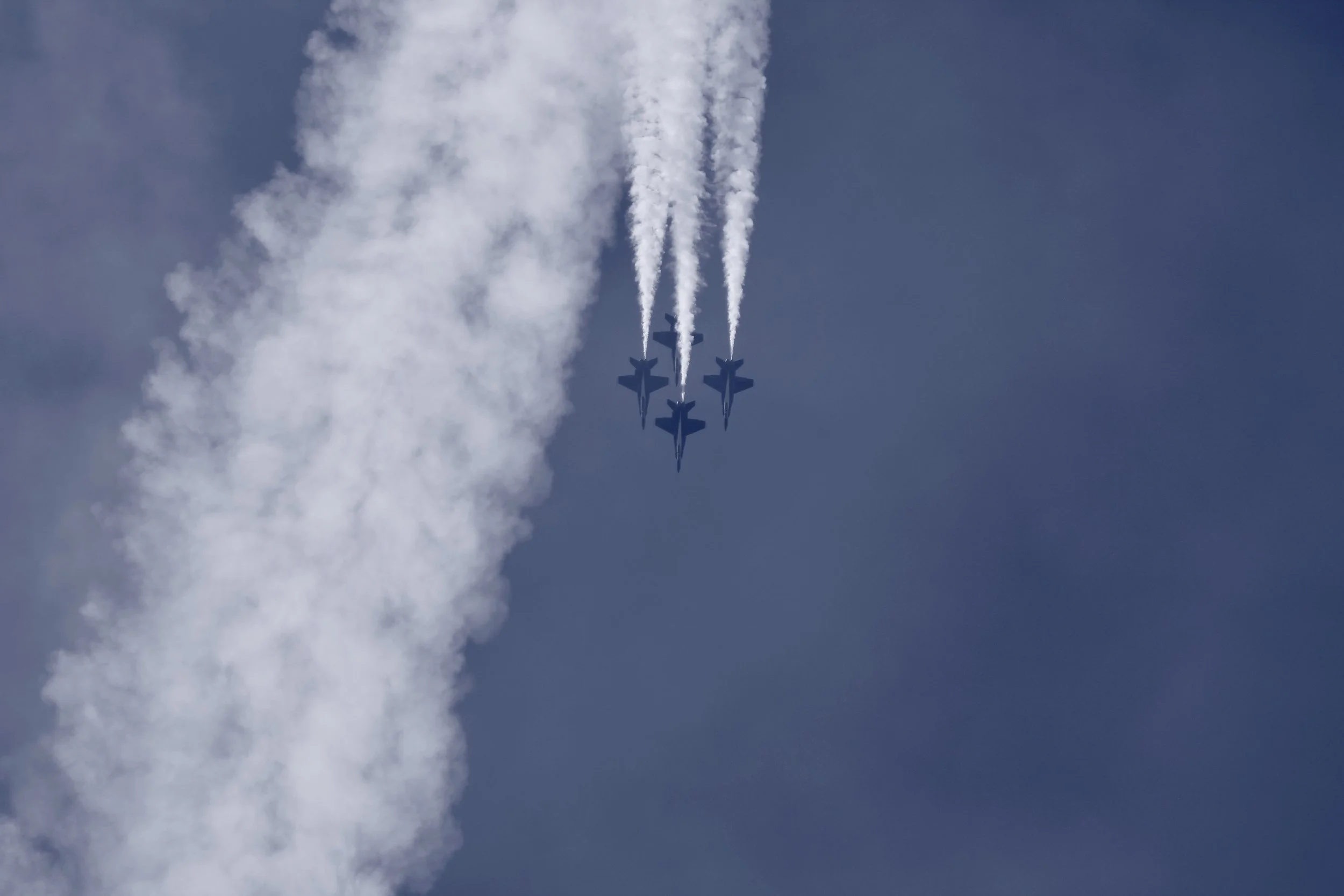Breitling Huntington Beach Airshow Sets Tone Towards Aviation Future
The Breitling Huntington Beach Air Show, only in its second year, hosted thousands of aviation enthusiasts and professionals alike along its shoreline. The airshow was held for three days, and although unwelcome fog cancelled Friday’s practice, the skies were cleared for take-off over the weekend.
In the distance boats were still, quietly waiting for the arrival of various aerobatic feats. Within sight of a five-mile Pacific Coast Highway, including a crowded Huntington Beach Pier, enthusiasts were trying to fit close to the show’s epicenter, searching the sky and occasionally surprised by low flights soaring feet over their heads. Nearby residents sitting on roofs and vacation wagons settled to get a glimpse, catching a nap under the blue busy sky or entertaining with friends. Although the dress code was, as always is in Huntington – beach casual or surf – guests were proudly sporting pilot hats from the early 1920’s to Millennium airline fashions. Between the US Navy Blue Angels, the Royal Canadian Air Force Snow Birds, to “Franky” Zapata’s space-aged flying machine, it was a celebration of American aviation, its history and future.
The United States Navy Blue Angels captured the crowd’s imagination flying in formations beyond human aptitude. “Welcome to the Jungle” by Guns N’ Roses and Led Zeppelin’s “Immigrant Song” echoed introducing each aircraft as it approached from the north, south, east and west. The F/A 18 Hornet jets shaped into a “Diamond Dirty” only 18 inches apart among some of the other feats and challenges.
The F-35A “Lightning” II had a breakthrough appearance. It is the Air Force fifth generation and expected to carry missions in the next 50 years. Its stealth technology, enhanced situational awareness, advanced integrated avionics and reduced vulnerability were designed to replace aging aircraft inventories. It is also considered by the science community and secretary of Navy Ray Mabus one of the last piloted planes in the United States Navy.
“These are maneuvers which to a large extent pilots do in the fleet. But to do them here with a crowd up-close that get to see it, it’s exciting,” said Astronaut Mark Kelly, former NASA scientist and US Navy pilot. Kelly’s attendance at the airshow highlighted the invested enthusiasm in our nation’s advancing technology and aviation, especially in California.
“I have certainly been fortunate to live in this tiny silver of time between Wilbur and when pilots are put out of business. I am not sure if that is 25 years from now or 100 years from now but it’s coming.”
“Ultimately the direction in which this [aviation] is going is totally autonomous. I don’t know what an airshow looks like 50 years from now. That’s why it’s great to see probably half a million people out here today, coming out to see what their tax payer dollars are going towards to defend our country.”
Kelly has soared to the greatest heights known to human. NASA expeditions included his first spaceflight in 2001 aboard space shuttle Endeavour, following as Pilot and Commander of space shuttle Discovery and completing Endeavour’s last mission and flight, now on exhibit at the California Science Center. During his last expedition Kelly traveled more than 6.5 million miles and orbited the earth 248 times over 15 days. Coming from New Jersey he didn’t have a chance to see an airshow only until he joined the US Navy. Today we can only imagine seeing an airshow through his eyes.
“Unbelievable. Every time going into space is just incredible.”
“It’s a lot of fun. Didn’t take a lot of courage for me to do it.”
Astronaut Mark Kelly attends the Huntington Beach Airshow.
Photography Credits by DIAMONDS MIRROR / Photographer KASHEA KLOSS

















